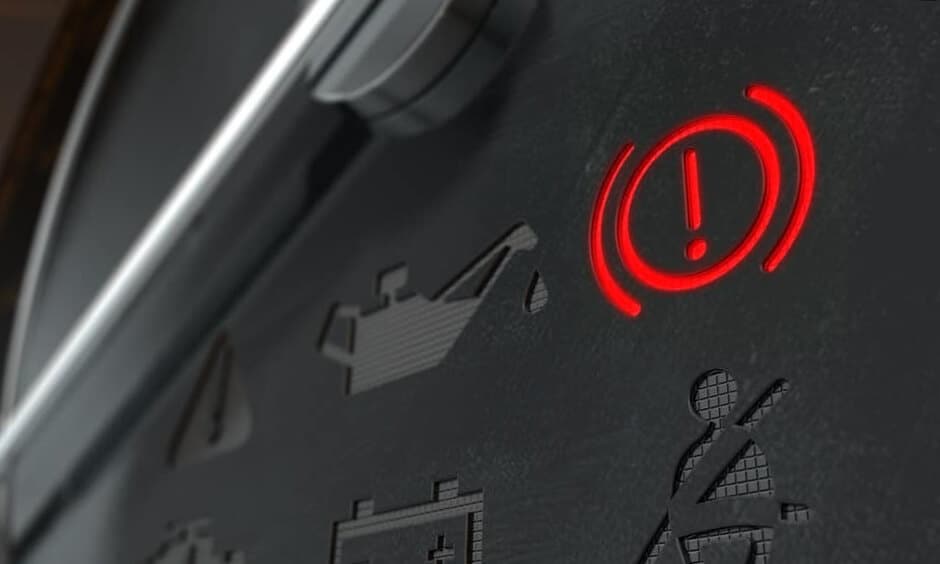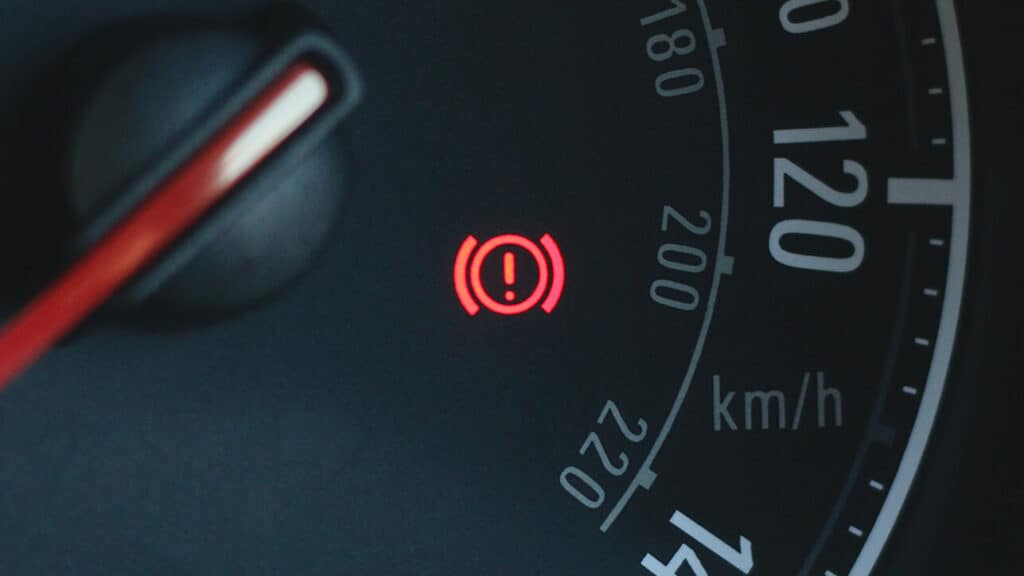The Importance of Heeding Brake Warning Lights
Brake warning lights are designed to alert drivers to potential issues with their vehicle’s braking system. These warning lights should never be ignored, as they can indicate problems that could compromise your safety and that of others on the road. In this article, we’ll discuss the different types of brake warning lights, the potential consequences of ignoring them, and the steps to take when they come on.

Types of Brake Warning Lights and Their Meanings
There are several types of brake warning lights, each serving a specific purpose in alerting drivers to potential issues. Understanding the meaning of each warning light is crucial to ensuring your vehicle’s safety and performance.
• Brake System Warning Light: The brake system warning light, usually represented by an exclamation mark inside a circle or a “BRAKE” text, typically indicates a problem with your vehicle’s hydraulic brake system. This could mean low brake fluid levels, a leak in the brake lines, or an issue with the master cylinder.
• ABS Warning Light: The ABS (Anti-lock Braking System) warning light signals a problem with your vehicle’s ABS system, which prevents wheels from locking during hard braking. If this light comes on, it means your ABS may not function correctly, increasing the risk of skidding or losing control in emergency braking situations.
• Brake Pad Wear Indicator Light: Some vehicles are equipped with brake pad wear indicator lights that alert drivers when their brake pads have reached a critically low level of thickness. This light typically appears as a circle with several dashed lines surrounding it.
Potential Consequences of Ignoring Brake Warning Lights
Ignoring brake warning lights can have serious consequences, including:
• Decreased Braking Performance: A malfunctioning brake system can lead to reduced braking performance, making it more difficult to stop your vehicle in a timely and controlled manner. This can be particularly dangerous in emergency situations or during challenging driving conditions, such as wet or icy roads.
• Increased Risk of Accidents: Ignoring brake warning lights can increase the risk of accidents due to decreased braking performance or the potential for brake failure. Taking the necessary steps to address brake system issues can help prevent collisions and keep you and others safe on the road.
• Costly Repairs and Component Damage: Delaying brake system repairs can lead to further damage and more costly repairs in the long run. For example, driving with worn brake pads can cause damage to your brake rotors, which can be expensive to replace.
What to Do When Your Brake Warning Light Comes On
If your brake warning light comes on, it’s essential to take the following steps to ensure your safety and prevent further damage:
• Inspect Your Brakes and Fluid Levels: Check your brake fluid levels and inspect your brake system for any visible issues, such as leaks or worn components. If you find any problems or if the fluid level is low, address them immediately.
• Schedule a Brake Inspection with a Professional: If you can’t identify the issue yourself or if the warning light persists after addressing any visible problems, schedule a brake inspection with a professional mechanic. They can diagnose the issue and recommend the appropriate repairs or maintenance.
• Don’t Delay Necessary Repairs or Maintenance: Once you’ve identified the issue, don’t delay in addressing it. Neglecting necessary repairs or maintenance can lead to more severe problems and potential safety hazards.
Common Brake Issues That Can Trigger Warning Lights
Several common issues can trigger brake warning lights, including:
Low Brake Fluid Levels
Low brake fluid levels can cause the brake system warning light to illuminate. This can result from leaks in the brake lines or simply from normal brake pad wear.
Worn Brake Pads or Shoes
Worn brake pads or shoes can trigger the brake pad wear indicator light. As brake pads wear down over time, they become less effective at stopping your vehicle and may produce grinding or squeaking noises. If left unaddressed, worn brake pads can cause damage to other brake components, such as rotors or drums.
Malfunctioning ABS System
A malfunctioning ABS system can cause the ABS warning light to come on. This issue could be due to a damaged wheel speed sensor, a faulty ABS control module, or a problem with the ABS hydraulic pump. If the ABS system isn’t functioning correctly, your vehicle may be more prone to skidding or losing control during hard braking.
Tips for Preventing Brake System Problems
To prevent brake system issues and keep your vehicle safe, follow these tips:
• Regular Brake Inspections and Maintenance: Schedule regular brake inspections with a professional mechanic, who can identify and address any potential issues before they become significant problems.
• Staying Aware of Changes in Brake Performance: Pay attention to any changes in your vehicle’s braking performance, such as reduced stopping power, pulsation in the brake pedal, or unusual noises. If you notice any of these symptoms, have your brakes inspected as soon as possible.
• Using High-Quality Brake Components: When replacing brake components, opt for high-quality parts from reputable manufacturers. This can help ensure optimal braking performance and prolong the life of your braking system.
The Role of Technology in Brake System Monitoring and Safety
Modern vehicles are increasingly equipped with advanced technology designed to monitor the brake system and alert drivers to potential issues. In addition to traditional brake warning lights, some vehicles feature electronic stability control, brake assist systems, and even autonomous emergency braking. These technologies can help improve overall braking performance and safety, but they still rely on the driver’s awareness and responsiveness to potential issues.

The Importance of Driver Awareness and Responsiveness
While technology can assist in brake system monitoring and safety, it’s ultimately up to the driver to take the necessary precautions and respond appropriately to warning signs. Regularly inspecting your brakes, addressing issues promptly, and maintaining awareness of changes in braking performance can help ensure your vehicle remains safe and reliable.
Conclusion: Prioritize Safety by Taking Your Brake Warning Lights Seriously
Ignoring brake warning lights can have severe consequences, including decreased braking performance, increased risk of accidents, and costly repairs. By understanding the different types of warning lights and their meanings, addressing issues promptly, and taking preventative measures, you can prioritize your safety and that of others on the road. Remember that while technology can assist in monitoring your brake system, it’s ultimately your responsibility as a driver to stay aware and respond appropriately to potential issues.
Here’s why Uchanics should be your top choice for brake repairs:
• Experience brake pad replacements and brake servicing right at your doorstep
• Effortless online booking for your convenience
• Transparent, competitive pricing
• Skilled mobile technicians at your service
• Utilizing top-notch equipment and superior replacement parts
• Capability to complete 90% of repairs on-site, eliminating the need for a trip to the auto repair shop
• A reassuring 12-month, 20,000 km warranty for peace of mind
• Covering over 40 cities in Ontario including Oshawa, Ajax, Toronto, Vaughan, North York, Brampton, Mississauga and more
To receive a precise estimate for the cost of replacing your brake pads, simply request a Free quote by clicking here.
